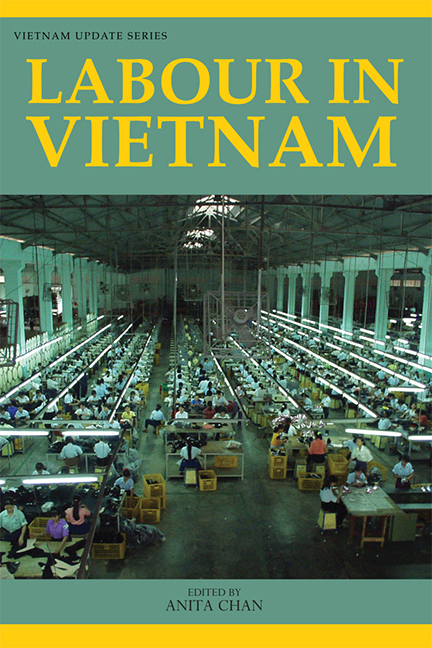Book contents
- Frontmatter
- Contents
- List of Tables and Figures
- Abbreviations
- Acknowledgements
- The Contributors
- 1 Introduction
- 2 “Awakening the Conscience of the Masses”: The Vietnamese Confederation of Labour 1947–75
- 3 State Enterprise Workers: “Masters” or “Commodities”?
- 4 The Redivision of Labour in a Red River Delta Village in a Globalized Economy
- 5 Corporate Social Responsibility in Socialist Vietnam: Implementation, Challenges, and Local Solutions
- 6 Workers' Protests in Contemporary Vietnam
- 7 Strikes in Vietnam and China in Taiwanese-owned Factories: Diverging Industrial Relations Patterns
- 8 The Dynamics of a Multinational Factory Regime and Recent Strikes in Vietnam
- 9 How Does Enterprise Ownership Matter? Labour Conditions in Fashion and Footwear Factories in Southern Vietnam
- 10 Exploitative Recruitment Processes and Working Conditions of Vietnamese Migrant Workers in Taiwan
- Index
7 - Strikes in Vietnam and China in Taiwanese-owned Factories: Diverging Industrial Relations Patterns
Published online by Cambridge University Press: 21 October 2015
- Frontmatter
- Contents
- List of Tables and Figures
- Abbreviations
- Acknowledgements
- The Contributors
- 1 Introduction
- 2 “Awakening the Conscience of the Masses”: The Vietnamese Confederation of Labour 1947–75
- 3 State Enterprise Workers: “Masters” or “Commodities”?
- 4 The Redivision of Labour in a Red River Delta Village in a Globalized Economy
- 5 Corporate Social Responsibility in Socialist Vietnam: Implementation, Challenges, and Local Solutions
- 6 Workers' Protests in Contemporary Vietnam
- 7 Strikes in Vietnam and China in Taiwanese-owned Factories: Diverging Industrial Relations Patterns
- 8 The Dynamics of a Multinational Factory Regime and Recent Strikes in Vietnam
- 9 How Does Enterprise Ownership Matter? Labour Conditions in Fashion and Footwear Factories in Southern Vietnam
- 10 Exploitative Recruitment Processes and Working Conditions of Vietnamese Migrant Workers in Taiwan
- Index
Summary
In previous chapters we have seen that the number of strikes in Vietnam has exploded, especially in the country's export industries. This chapter takes the phenomenon of strikes in the export sector further by placing it in comparative perspective, using China as a foil. This can help to further our understanding of Vietnamese strikes and their implications for Vietnam's industrial relations system.
Even though Vietnam and China have emerged from similar histories of Communist Party rule, the labour laws of the two countries are a study in contrasts. Nowhere is the distinction more marked than in the regulation of strikes. Vietnam has legislated complex provisions detailing when and how strikes can legally occur, and specifying the negotiations that must precede a strike. The intent is to regulate labour discontent by providing workers with a collective bargaining platform and strike procedures when bargaining breaks down, so as to reduce the outbreak of wildcat strikes. Chinese law, in contrast, does not mention strike actions, and as a result they are neither legal nor illegal. We therefore might expect fewer strikes in Vietnam, where legal sanctions exist to regulate them; but the reverse is the case. Vietnam witnesses waves of wildcat strikes, whereas China observes far fewer strike actions. Also unexpected is that although the strikes in Vietnam are illegal, they are unimpeded by the authorities, who often in fact act in the interests of the strikers, whereas strikes in China which cannot be categorized as illegal are nonetheless normally vigorously suppressed by the authorities.
To understand this sharp contrast in labour laws and their implementation, Section I of the chapter will compare the course of strikes in Vietnam and China. Section II will examine the underlying factors: the differences in the two countries' labour laws and legal regulatory regimes, the tripartite dispute-resolution institutions, the legal labour standards established by the governments, and the relationship between the government and the official trade union. Section III will analyze the trends in the two countries' industrial relations patterns.
- Type
- Chapter
- Information
- Labour in Vietnam , pp. 211 - 251Publisher: ISEAS–Yusof Ishak InstitutePrint publication year: 2011

